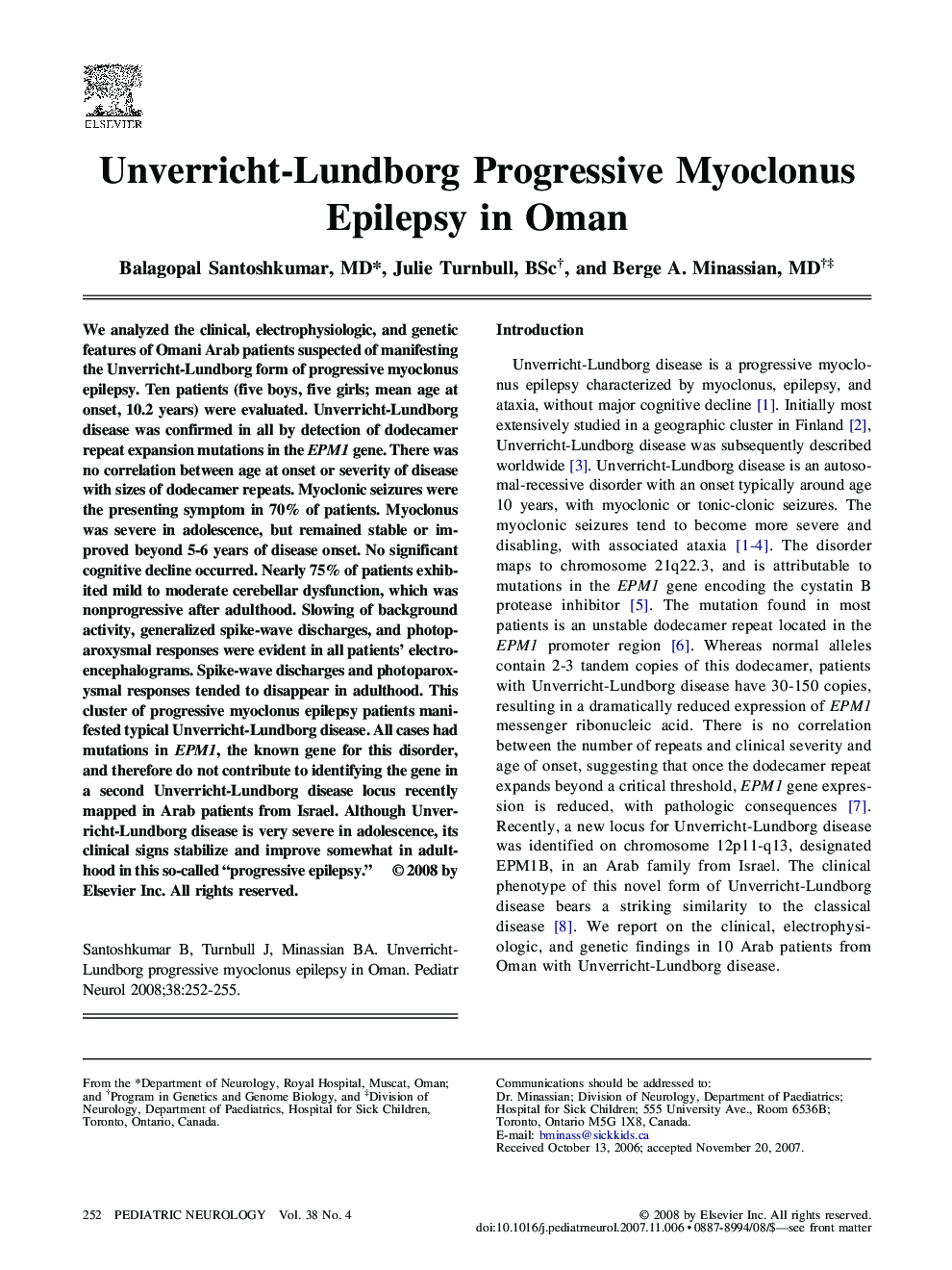| کد مقاله | کد نشریه | سال انتشار | مقاله انگلیسی | نسخه تمام متن |
|---|---|---|---|---|
| 3086806 | 1189885 | 2008 | 4 صفحه PDF | دانلود رایگان |

We analyzed the clinical, electrophysiologic, and genetic features of Omani Arab patients suspected of manifesting the Unverricht-Lundborg form of progressive myoclonus epilepsy. Ten patients (five boys, five girls; mean age at onset, 10.2 years) were evaluated. Unverricht-Lundborg disease was confirmed in all by detection of dodecamer repeat expansion mutations in the EPM1 gene. There was no correlation between age at onset or severity of disease with sizes of dodecamer repeats. Myoclonic seizures were the presenting symptom in 70% of patients. Myoclonus was severe in adolescence, but remained stable or improved beyond 5-6 years of disease onset. No significant cognitive decline occurred. Nearly 75% of patients exhibited mild to moderate cerebellar dysfunction, which was nonprogressive after adulthood. Slowing of background activity, generalized spike-wave discharges, and photoparoxysmal responses were evident in all patients’ electroencephalograms. Spike-wave discharges and photoparoxysmal responses tended to disappear in adulthood. This cluster of progressive myoclonus epilepsy patients manifested typical Unverricht-Lundborg disease. All cases had mutations in EPM1, the known gene for this disorder, and therefore do not contribute to identifying the gene in a second Unverricht-Lundborg disease locus recently mapped in Arab patients from Israel. Although Unverricht-Lundborg disease is very severe in adolescence, its clinical signs stabilize and improve somewhat in adulthood in this so-called “progressive epilepsy.”
Journal: Pediatric Neurology - Volume 38, Issue 4, April 2008, Pages 252–255